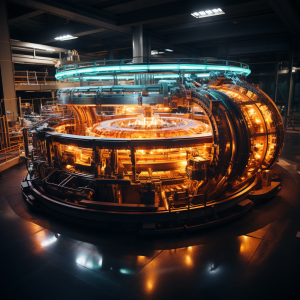
What are the key concepts of condensed matter physics?
Condensed matter physics is a branch of physics that focuses on understanding the behavior of solid and liquid matter under various conditions. The term “condensed” is used because solids and liquids have much higher densities – that is, more condensed particles – compared to gases. The field investigates a wide array of topics, from understanding the behavior of electrons in a metal to studying exotic states of matter like superconductors and Bose-Einstein condensates. Here are some of the key concepts of condensed matter physics:
Quantum Mechanics
Quantum mechanics is a fundamental tool in condensed matter physics. At the heart of many phenomena in condensed matter are quantum effects. Understanding the behavior of electrons in solids, for example, requires a quantum mechanical perspective.
Crystal Structures
A large part of condensed matter physics is dedicated to studying solids, many of which possess a crystalline structure. Understanding the arrangement of atoms in a crystal, and how these arrangements influence the properties of the material, is a key aspect of the field.
Electronic Band Structure
Another important concept is the band structure of solids. In isolated atoms, electrons occupy discrete energy levels. However, when atoms come together to form a solid, these energy levels merge to form bands. The band structure greatly influences the electrical and optical properties of the material.
Semiconductors
Semiconductors are materials with an electrical conductivity that lies between conductors and insulators. The behavior of semiconductors forms the foundation of modern electronics. Research into semiconductors involves studying their properties and finding new ways to manipulate them for technological applications.
Superconductivity
Superconductivity refers to the phenomenon of zero electrical resistance in certain materials at very low temperatures. Understanding why certain materials become superconductors, how to increase their transition temperatures, and how to exploit superconductivity in technology are active research areas in condensed matter physics.
Magnetism
Magnetic phenomena, including ferromagnetism (permanent magnetism), paramagnetism (weak and temperature-dependent magnetism), diamagnetism (weak magnetism that opposes the applied field), and antiferromagnetism (neighboring magnetic moments that point in opposite directions), are key areas of study in condensed matter physics.
Phase Transitions
Phase transitions, like the transition from a solid to a liquid or from a normal conductor to a superconductor, are of great interest. The field examines what happens at the critical point of a phase transition, and quantum phase transitions (which occur at absolute zero temperature) are a particular focus.
Quasiparticles
These are emergent phenomena that occur in many-body systems and act as if they were particles. Examples include phonons (vibrations of a lattice of atoms in solids), excitons (electron-hole pairs), and magnons (spin waves in magnets). These quasiparticles can greatly influence the properties of the material.
Topological Insulators
These are materials that act as insulators in their interior but whose surface contains conducting states. The study of topological insulators and related topological phases of matter is a rapidly growing field in condensed matter physics, with potential applications in quantum computing.
In conclusion, condensed matter physics deals with many fascinating and complex phenomena, from the familiar, such as the behavior of electrons in a metal, to the exotic, like superconductivity and topological insulators. The field combines foundational physics concepts with practical applications, making it a critical area of research for advancing technology and understanding the natural world.




